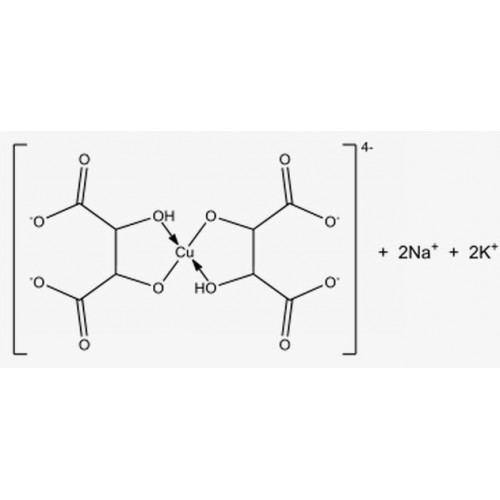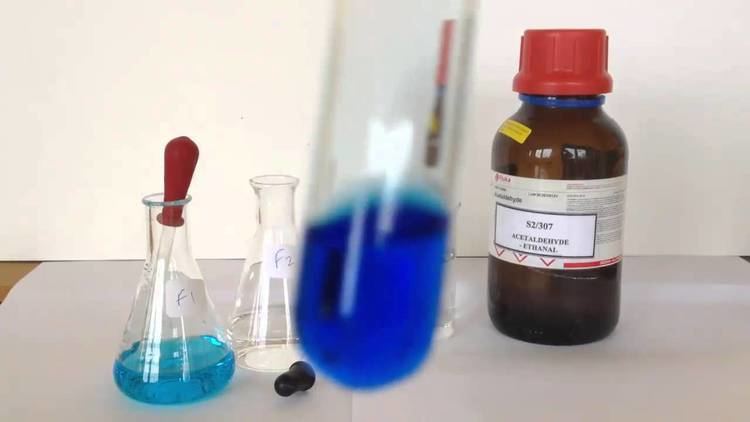Classification Colorimetric method | Analytes Monosaccharides | |
 | ||
Similar Benedict's reagent, Dextrose equivalent, Tollens' reagent | ||
Haloalkanes 5 fehling s solution to identify aldehydes
Fehling's solution is a chemical reagent used to differentiate between water-soluble carbohydrate and ketone functional groups, and as a test for reducing sugars and non-reducing sugars, supplementary to the Tollens' reagent test. The test was developed by German chemist Hermann von Fehling in 1849.
Contents
- Haloalkanes 5 fehling s solution to identify aldehydes
- Laboratory preparation
- Use of the reagent
- Safety
- References

Laboratory preparation

Fehling's solution is prepared by combining two separate solutions, known as Fehling's A and Fehling's B. Fehling's A is aqueous solution of copper(II) sulfate, which is deep blue. Fehling's B is a colorless solution of aqueous potassium sodium tartrate (also known as Rochelle salt) made in a strong alkali, commonly with sodium hydroxide. Typically, the L-tartrate salt is used. The copper(II) complex in Fehling's solution is an oxidizing agent and the active reagent in the test.

The deep blue active ingredient in Fehling's solution is the bis(tartrate) complex of Cu2+. The tartrate tetraanions serve as bidentate alkoxide ligands.
Use of the reagent
Fehling's can be used to distinguish aldehyde vs ketone functional groups. The compound to be tested is added to the Fehling's solution and the mixture is heated. Aldehydes are oxidized, giving a positive result, but ketones do not react, unless they are alpha-hydroxy-ketones. The bistartratocuprate(II) complex oxidizes the aldehyde to a carboxylate anion, and in the process the copper(II) ions of the complex are reduced to copper(I) ions. Red copper(I) oxide then precipitates out of the reaction mixture, which indicates a positive result i.e. that redox has taken place (this is the same positive result as with Benedict's solution). A negative result is the absence of the red precipitate; it is important to note that Fehling's will not work with aromatic aldehydes; in this case Tollens' reagent should be used.
Fehling's test can be used as a generic test for monosaccharides and other reducing sugars (e.g., maltose). It will give a positive result for aldose monosaccharides (due to the oxidisable aldehyde group) but also for ketose monosaccharides, as they are converted to aldoses by the base in the reagent, and then give a positive result.
Fehling's can be used to screen for glucose in urine, thus detecting diabetes. Another use is in the breakdown of starch to convert it to glucose syrup and maltodextrins in order to measure the amount of reducing sugar, thus revealing the dextrose equivalent (DE) of the starch sugar.
Formic acid (HCO2H) also gives a positive Fehling's test result, as it does with Tollens' test and Benedict's test also. The positive tests are consistent with it being readily oxidizable to carbon dioxide.
Safety
Sodium hydroxide is caustic.
